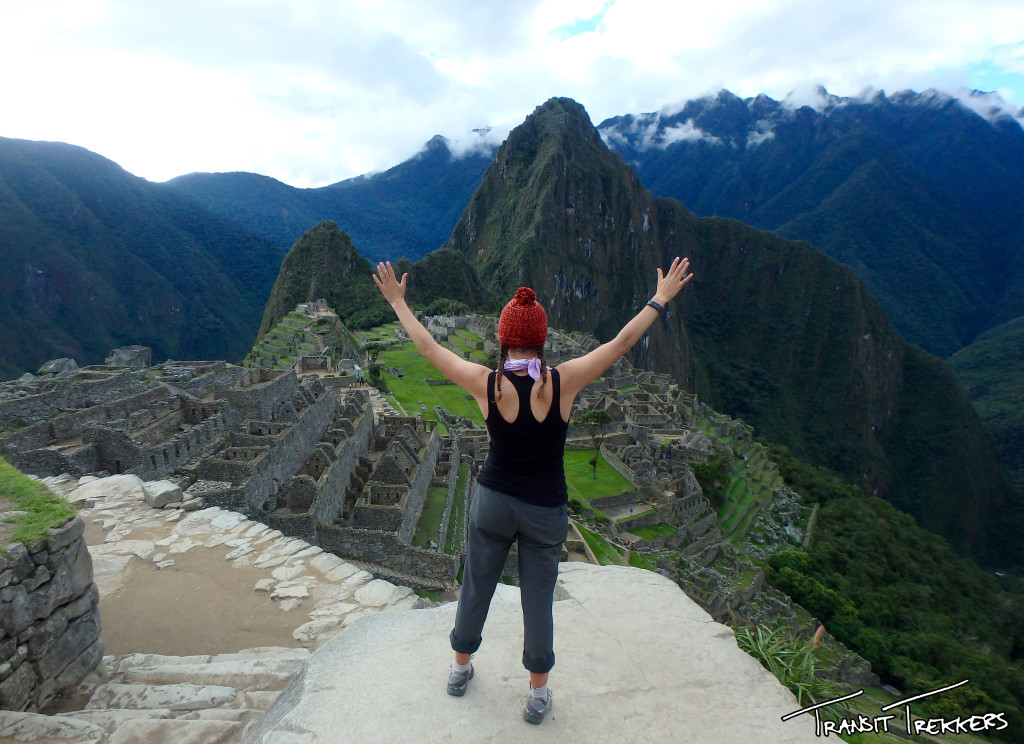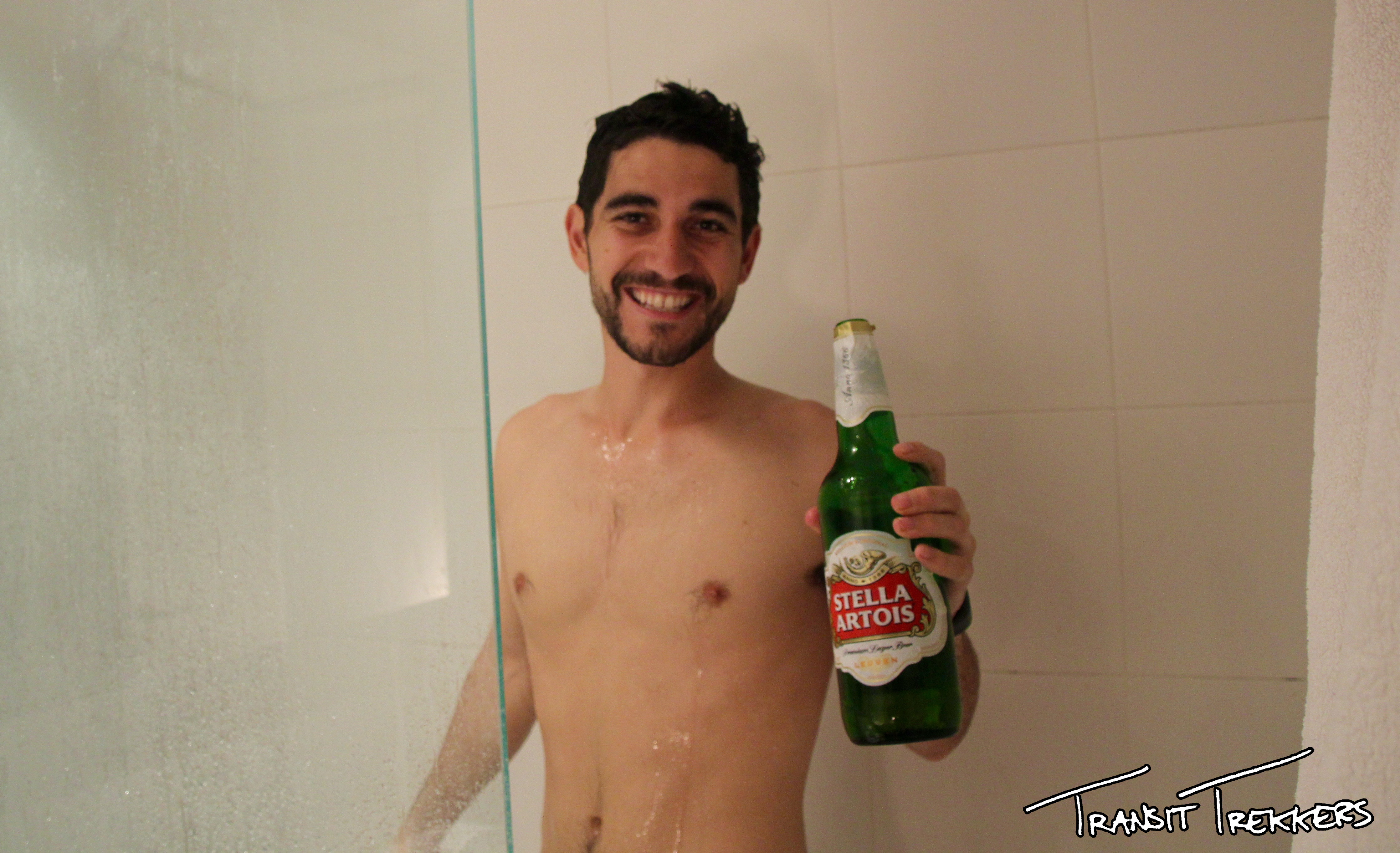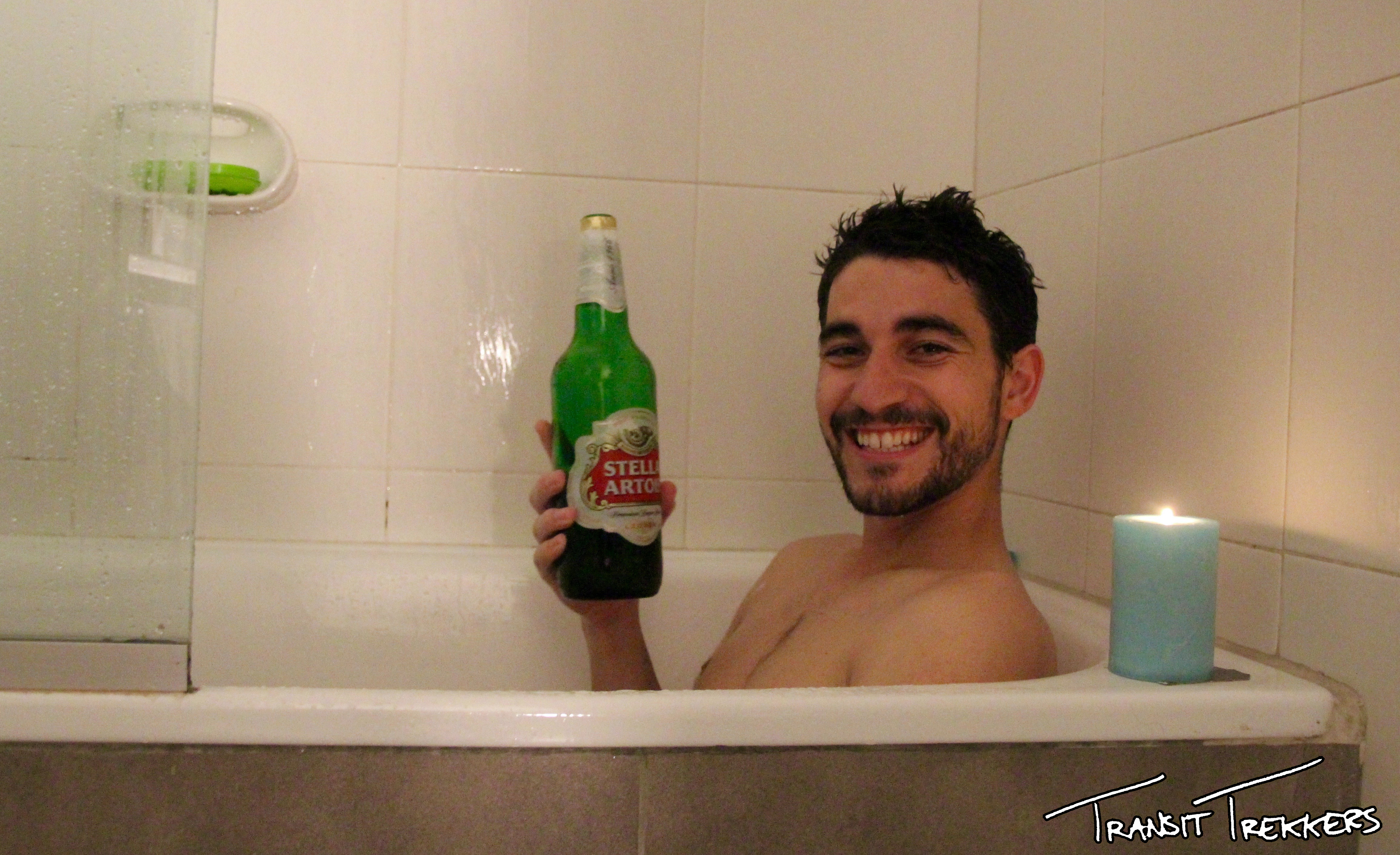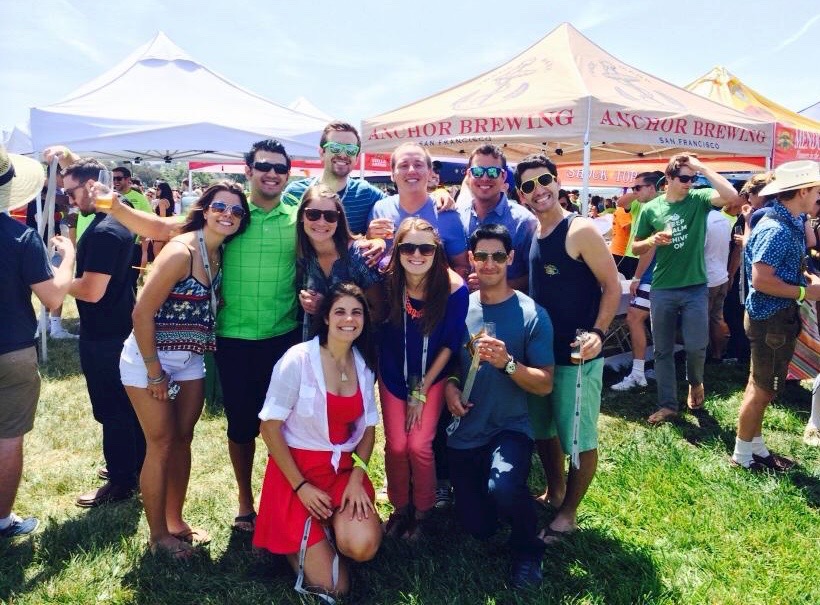Many people dream of traveling the world but too many view money as a barrier. If you want it bad enough and you put your mind to it, you can save the money you need to stand on top of the world. This post details our money saving tips for travel and what actions we took to save enough to take our dream trip. We’re hoping a little inspiration will get you there too!
So how did we save enough to fund our adventure? It’s going to sound super simple and you’re not going to like our big “super secret advice”. Ready? – Only spend money on what is necessary in your life, and on things that ultimately bring you closer to your end goal. While we were saving for the trip of a lifetime, the same ideas and actions apply to any major expenses you want to save for – a new car, a down payment for a house, college tuition, etc.
Step 1: Come Up With A Goal Amount
Through Lonely Planet research and reading other travel blogs we came up with a rough (and hopefully conservative) estimate of how much it would cost to travel for a year in South America for the two of us, based on the way we wanted to travel. The answer: $60,000. Daunting huh? Find out how we came up with $30,000 per person and what it gets you in this breakdown.
With twelve months to save, we were ready to get to work.
Step 2: Track Your Spending
The next step is figuring out what the heck you’re spending it on. We went back in time several months through online bank statements and credit card transactions (Mint is super helpful here) to figure out where all our money was going if it wasn’t being saved – okay, some was being saved but not nearly enough to get us to our goal. We created this excel spreadsheet tool to organize everything.
In addition, we made a conscious decision to use a credit card for as many purchases as possible for a few reasons: it’s easier to track and categorize expenses, we earned rewards for our credit card purchases, and we increased our credit limit improving our credit score. Check out our recommended travel credit card. Obligatory word of warning: be careful and smart about using a credit card and always pay off your balance in full each month.
Step 3: Separate Fixed Versus Variable Expenses
We split our monthly spending into two categories – fixed monthly expenses and variable monthly expenses. Fixed expenses are things like rent (or mortgage), electricity bills, car payments, cable bills, or anything else that you pay the same amount for every month. Variable expenses are the costs that change every month like eating out at restaurants, shopping at Macy’s, cash from the ATM, etc.
Remember that just because something is a variable expense, doesn’t mean that it’s totally unnecessary – like food; no matter how much money you want to save, homegirl still needs to eat. But we need to think about how money is spent on food – groceries versus fancy restaurants.
Step 4: Look For Ways To Save
We really tried to focus on minimizing fixed monthly expenses and drastically reducing or eliminating most variable monthly expenses. For the fixed expenses, we worked hard to find an apartment with relatively low rent. For us that meant finding an apartment in Oakland rather than San Francisco. Other ideas include renting out a second bedroom, getting a studio, or sharing a bedroom. Also, we decided to cut the cord on cable TV. We kept internet because, well, who couldn’t live without the internet, but cable TV was too expensive and we weren’t using it enough to justify keeping it. Online television (Netflix, HBO Go, Amazon Prime Instant Video) makes it so easy to keep up on specific programs, while eliminating mindless TV watching. The one thing we were most worried about was missing out on live sports so we ended up making more of an effort to meet up with friends to watch important games.
For variable expenses, we looked for ways to cut things out that were superfluous like buying clothes we didn’t need (this was harder for Tamara, but she did very well), or eating out at restaurants too often. One of the biggest variable expenses we had was food. Luckily Mikey likes to cook so the transition from eating-out to eating-in was not too difficult. It also made going out to a restaurant more of a treat when we actually did. Cooking a lot of food on Sunday and bringing leftovers for lunch each day to work became the norm; it’s amazing how much you can spend on food in San Francisco just from eating out for lunch five days a week. We also kept an eye on our alcohol spending because this is an area that can easily get out of hand. When we did drink we tried to pre-game with our own alcohol at home so we wouldn’t have to buy as much at a bar. This practice included many shower beers (give some love to bath beers too) and shots out of water bottles on transit… what good memories!
Lastly, we made the step to downsize from two cars to one (although Mikey’s Honda was literally held together with duct tape) and tried to use our remaining car as little as possible. Public transit became our ride to work and biking or walking became a fun, healthy alternative for shorter trips. When we really needed a car, we’d offer to carpool to be efficient. For insurance, shop around until you get the best rate, and consider Metromile insurance, which only charges the miles you drive.
Step 5: Make Yourself Accountable
Next it was time to make ourselves accountable. Having a savings buddy was extremely valuable because we could remind each other of the end-goal and could add a second opinion on questionable expenses. It’s helpful to tell a good friend or family member about your goal/saving plan and ask them to remind you every so often to keep you on track. Or set calendar reminders to make sure you don’t slip on your saving targets. Utilize post-it notes in important places such as your wallet to remind you of your end goal.
Step 6: Don’t Cut Out The Important Things
Be realistic. Yes, saving money includes sacrifices, but we do have certain things we are not willing to cut out to save money. For us, it was important to maintain relationships. We were not about to miss out on fun friend and family events to save a buck. When possible, we would suggest free or cheaper alternatives for an event, like a hike instead of the movies or hosting a dinner party rather than going out to a restaurant. And if there was something we really wanted to do (e.g. weekend ski trip to Tahoe with friends), we would do it and then cut back other expenses for the next few months to make up for it.
- SLO Beer Fest Friends
In the end, as everyone always says, it is the small things that add up. So if you’re a coffee drinker consider brewing for yourself rather than buying a double-mocha-frap-iado-caramel-twist-deluxe coffee from Starbucks. Packing a lunch to work each day saves around $50 per week – that’s almost $3,000 per year that can go towards your next trip, dream wedding, or epic skydiving adventure. And remember…
Fill your life with experiences, not things. Have stories to tell, not stuff to show.
Transit Trekker Tips
- Cut out buying soda and stick to free water at restaurants (it’s healthier!).
- Find and use forgotten gift cards or sell them at Coinstar exchange kiosks.
- Sell old books (textbooks are valuable), DVDs, clothes, and electronics on eBay, Craigslist, and Amazon. Doesn’t hurt to post them and you might be surprised.
- Team-up with siblings, cousins, or friends for a family cell phone plan. It’s way cheaper per line.
- Share entrees at restaurants (too much food anyways).
- Make use of nature! Plan free outdoor activities like hiking or a picnic instead of shopping.
- Take advantage of free food. Free Chipotle boorritos on Halloween, anyone?
- Ask your employer about transit benefits. It may benefit you and the company.
- Turn in your random coins to Coinstar (redeeming for Amazon credit eliminates the fee).
- Unless having a gym membership is what gets you there (and that’s great!), consider running outside with the apps RunKeeper or Strava and maybe investing in an IronGym and a jump rope.






August 11, 2015 at 11:32 AM
Hi, Tamara & Mikey!
Thanks for the excellent article & advice!
I’m enjoying seeing you reap the rewards with a wonderful year on the road!
Love & Happy Trails always!
August 12, 2015 at 10:28 AM
Glad we can share the happy trail pictures and stories with you!
August 11, 2015 at 9:59 AM
Mikey and Tamara,
thank you for sharing your adventure with us. Your advice about saving the money for your trip is so true. My late husband and I did something similar when we bought our first home many years ago. We saved the salary I made from my teaching job. We watched every cent we spent, went on camping trips with borrowed equipment, had dinners with friends in our rented home. So much is possible with a goal and determination. It is good for young people like you two to share what you know.
Happy travels and new adventures to you both!
Rose (I live next to your Grandmother Gussie at West Walk)
August 12, 2015 at 10:27 AM
Thank you Rose!! It’s nice to hear you took similar steps and we like the borrowed equipment idea for camping! Hope all is well over there including little Rose!
August 11, 2015 at 7:46 AM
Hi Tamara and Mikey,
Great article and advice…
Keep it up and ENJOY!
August 12, 2015 at 10:08 AM
Gracias Uncle Ken!! Thanks for reading and hope all is well over there! We may be video chatting this Sunday so see you soon!
August 10, 2015 at 8:43 PM
Excellent tips; you adopted money management skills for this trip that will carry you through your life. Your budgeting process is spot on. Good work and have a great trip.
August 12, 2015 at 10:04 AM
Gracias Tio Frank!! Thanks for reading and I know you and my dad both followed similar financial steps while growing up. Must be a Lima thing : ) Also, we made it over the Andes mountains by bus okay! Didn’t get sent back to Santiago like someone we know.